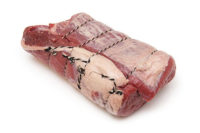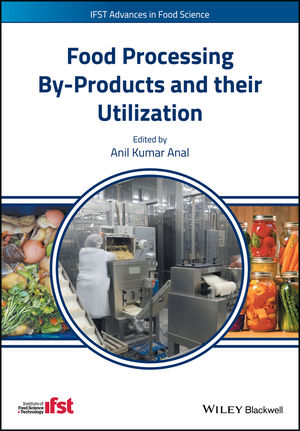Whole-muscle products keep it together
Producers of whole-muscle products are reducing sodium (and inorganic phosphates for clean labels), while maintaining taste and quality.






If a product has low sodium content but isn't labeled as such, does it taste better than a labeled “low-sodium” product? Apparently.
“If consumers see that a product is low-sodium, they shy away from them because they equate them with poor flavor,” says Andrew Milkowski, Ph.D., adjunct professor, animal sciences, muscle biology laboratory, University of Wisconsin-Madison.
But that hasn’t stopped whole-muscle product processors from continuing to work on reducing sodium (and inorganic phosphates for clean labels), while maintaining taste and quality, he says. The proof, still, is on the label.
“Changing levels of either salt or phosphates could have a big impact on reducing water-holding capacity of these products, not to mention the concern with changing levels of both,” says Lynn Knipe, Ph.D., extension processed meats specialist at The Ohio State University.
For one, salt plays an important role in food-safety systems to inhibit bacteria, notes Milkowski. So if it’s taken out, it needs a replacement that can also improve the product’s food-safety profile.
Next, processors could reconsider using processes that were once thought of as being infeasible, such as increasing holding time to maximize the distribution of functional ingredients, says Knipe.
“The initial tumbling patents called for an 18-hour tumbling process, which most processors at the time considered to be too long and inefficient in modern processing schemes,” says Knipe. “Research has shown that you can get meat pieces to adhere with relatively short tumbling times; however, to maximize water-holding capacity, the longer the product can be held between injection and cooking, the better.”
For cured products, longer holding times will increase the curing reaction of the lean meat, he notes. Another area to consider is using and injecting pre-rigor meat for whole-muscle hams, he says.
“By taking advantage of stopping the pH drop normally associated with the rigor mortis process, pre-rigor meat will hold more moisture and allow for reduced levels of salt and phosphate to be added to the whole-muscle products,” says Knipe.
If phosphates are not used to provide a more natural product in whole-muscle products, then processors need ingredients that will improve water-holding capacity, as well as meet the requirements for clean labels, says Knipe. There are not many ingredients available that will satisfy all of these requirements.
However, phosphate suppliers have made improvements in tetrasodium pyrophosphate’s solubility, he says, allowing it to be more functional in cured products.
“Tetrasodium pyrophosphates may not totally replace tripolyphosphates; however, it would be wise to use increasing higher levels of tetrasodium pyrophosphates in whole-muscle products,” says Knipe.
More yields equal tougher meat?
As yield is always a focus of producers, increased yields typically increase lean muscle, which in turn decreases tenderness — an attribute of particular focus for consumers.
“A means to increase yield is to increase the quantity of limiting amino acids in animal feeds (methionine, lysine and threonine, for example),” says Josh Herring, Ph.D., associate professor, Department of Food & Animal Sciences, Alabama A&M University. “Breed and sex differences change the ratio of lean to fat and how the animal deposits those in the body. “
Marination is another way to increase product consistency, but requires processors to maintain and adhere to their food-safety policies while following USDA regulations, he says.
Similar to the consistency issue of product yields, says Herring, portion control and size is a concern for consumers, and for processors to try to get the most out of a product, “there should be a concern for portion control and obesity,” he says.
“To get the most square feet of board from a tree, loggers use computers and evaluate cutting procedures to maximize profits,” he says. “The meat industry may look to this as an option for portion sizing with larger cuts [beef round, for example].”
“Meat glue” (transglutaminase, thrombin, etc.) is a valuable way, he says, to increase the value of low-quality or smaller muscle cuts by joining them to make larger muscle cuts.
“This is no longer considered a whole-muscle cut, but many consumers may accept it if they know the potential risks,” says Herring. These ingredients are considered controversial to some, because they labeled as enzymes, so people with religious and dietary beliefs (such as Vegans) are unaware they are eating them.
Vacuum injection and marination is a method to reduce waste and increase retention, but may be a concern for many producers due to cost or time requirements, notes Herring.
According to Knipe, warmer product temperatures have been shown to result in better uptake and retention of solutions and, in the case of pork bellies, higher cooking yields.
To maximize protein extraction but minimize microbials, “one equipment manufacturer has developed a massaging unit which warms the product after injection, followed by a chilling cycle for proper protein extraction and to minimize microbial growth,” he says.
For the birds
Yield also affects birds’ size and portioning. Bird sizes, in most cases, “have increased significantly in the last few years because processors can get a higher yield with the same overhead costs by processing larger birds,” says Christine Alvarado, Ph.D., associate professor, Department of Poultry Science, Texas A&M University. “With these big birds, the breast meat can be tougher, and there can be higher incidence of quality issues such as pale, soft and exudative (PSE) meat and white striping.”
She notes that technology is available today to address these issues, but improvements also can be made with ingredient use and costs, especially, to update technology.
“There is also a need for better screening technology for poor-quality meat such as PSE and white striping,” she says. “Also, there is a need for better automatic debone systems,” instead of the currently used hand-deboning procedures that are labor intensive (but result in a better yield in some instances). Robotic deboning, created by Georgia Tech’s researchers, is another recent innovation, she says.
“Processors are always looking to gain efficiencies and manage costs, while keeping quality high,” notes Milkowski. “You’ll see better equipment coming out that helps lower costs and improve quality, and improves sanitary design.”
Looking for a reprint of this article?
From high-res PDFs to custom plaques, order your copy today!












